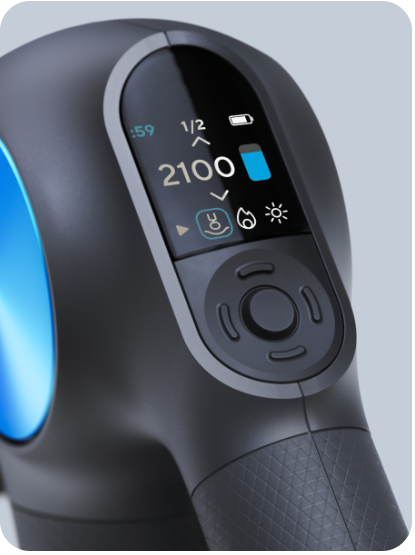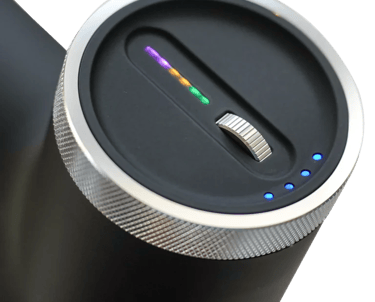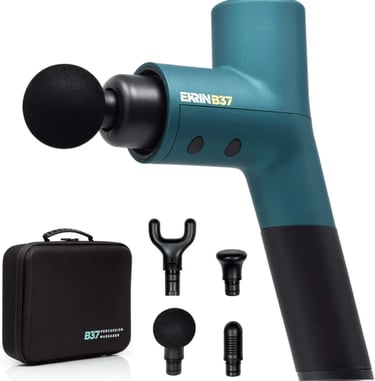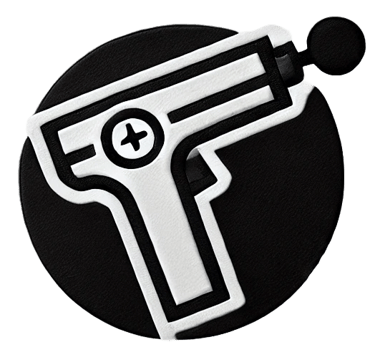What Is Massage Gun Stall Force? A Detailed Explanation - A 2025 Guide
Massage gun stall force is the pressure it can handle before the motor stops. It’s a key factor in determining how effectively the device targets deep tissues. Higher stall force is best for athletes and dense muscles, while lower is ideal for relaxation. Learn more in our full guide!
MASSAGE GUN INSIGHTS
Pulse Therapy Hub
11/17/2024






What Is Massage Gun Stall Force? A Detailed Explanation - A 2025 Guide
Ever wondered why some massage guns feel more powerful than others? The secret lies in a spec called 'stall force' - and it's not what most people think! After testing dozens of massage guns in my physical therapy practice, I've learned that understanding stall force is crucial for anyone serious about percussion therapy.
Here's a surprising fact: With massage gun stall forces ranging from 20 to 70 pounds, choosing the wrong one could mean the difference between effective deep tissue massage and just tickling your muscles. I learned this the hard way when I first started using massage guns in my practice!
What Is Stall Force in Massage Guns?
Let me break this down in simple terms. Stall force is the amount of pressure needed to stop the massage gun's motor from moving - basically, how hard you can push before the gun "stalls out." Think of it like trying to stir thick honey versus water with a spoon. The thicker the honey, the more force you need!
I remember working with my first budget massage gun. Every time I tried to work on my client's dense shoulder muscles, the motor would bog down and stop. Super frustrating! That's when I realized why the pro models cost more - they've got the muscle to keep pounding away when you need to apply serious pressure.
To put this in perspective, most entry-level massage guns have a stall force of around 20-30 pounds, while professional models can handle 40-50 pounds or more. And trust me, you can feel the difference when working on dense muscle groups!
Why Stall Force Matters for Massage Effectiveness
Here's something I wish someone had told me earlier: stall force isn't just about power - it's about consistency and effectiveness. When you're trying to work out a stubborn knot in your quadriceps (and we've all been there!), you need steady, consistent pressure to really make a difference.
I've noticed that clients often press harder when they're dealing with tight muscles, which is exactly when a lower stall force gun will give up on you. It's like trying to cut through a thick steak with a butter knife - technically possible, but not very effective!
The relationship between muscle density and required stall force is pretty fascinating. Larger muscle groups like glutes and quads typically need more force (around 40+ pounds) for effective treatment, while smaller areas like calves might only need 20-30 pounds.
Common Stall Force Ranges Explained
Let me break down what I've learned about different stall force ranges:
Entry-level (20-30 lbs):
Perfect for beginners
Works well on smaller muscle groups
Great for general relaxation
Might struggle with dense tissue
Usually found in sub-$100 models
Recommendation: Renpho Mini Thermal Massage Gun
Why? Lightweight, user-friendly, and great for beginners or general relaxation. Handles smaller muscle groups effectively. Price: ~$69.99.
Mid-range (30-40 lbs):
Sweet spot for most casual users
Handles most muscle groups effectively
Good balance of power and control
Works well for average-built individuals
Typically in the $100-200 range
Recommendation: Ekrin Athletics B37
Why? Balanced power and versatility, excellent for most muscle groups, and well-suited for casual users. Price: ~$199.
Professional (40-50 lbs):
Ideal for athletes and larger individuals
Excellent for deep tissue work
Never bogs down on dense muscles
Perfect for professional settings
Usually costs $200-300
Recommendation: Hyperice Hypervolt 2 Pro
Why? Ideal for athletes and advanced users, offering deep tissue massage and robust performance. Price: ~$299.
Commercial/Elite (50+ lbs):
Overkill for most users
Used in professional sports
Handles any muscle density
Built for constant use
Premium pricing ($300+)
Recommendation: Theragun PRO Plus
Why? The gold standard for professionals, built for heavy-duty, constant use, and any muscle density. Price: ~$599.
How to Choose the Right Stall Force for Your Needs
After helping countless clients select massage guns, I've developed a pretty foolproof method for choosing the right stall force. First, consider your body type and typical usage. If you're an athlete or have dense muscle tissue, don't even think about going below 40 pounds of stall force.
Here's a quick tip I learned through trial and error: press your current massage gun (or borrow one) into your largest muscle group until it stalls. That's your minimum required stall force. Add 10-15 pounds to that number for optimal performance.
Common mistakes I see people make:
Buying based solely on price
Assuming higher stall force is always better
Not considering their body type
Overlooking their intended use
The Science Behind Stall Force and Muscle Treatment
Let's get a bit technical (but not too nerdy, I promise!). Research shows that effective deep tissue massage requires between 15-30 pounds of sustained pressure to reach deep muscle fibers. Add in the rapid percussion movement of a massage gun, and you need even more force to maintain that pressure consistently.
I recently read a fascinating study in the Journal of Sports Medicine that found percussion therapy is most effective when it can maintain consistent pressure for 30-60 seconds per muscle group. This is where adequate stall force becomes crucial! Read the study here!
Stall Force vs Other Massage Gun Specifications
Here's something interesting I've noticed: stall force often correlates with other specs, but not always in obvious ways. For example, a high stall force usually means:
Larger amplitude (stroke length)
More powerful motor
Heavier overall weight
Shorter battery life
Higher price point
But here's the catch - some manufacturers compensate for lower stall force with higher speeds, which isn't always effective. It's like trying to make up for a dull knife by cutting faster!
Final Thoughts: Making Your Decision
After years of working with various massage guns, I can confidently say that stall force is one of the most important - yet often overlooked - specifications. For most people, I recommend starting with at least a 30-pound stall force, even if it means spending a bit more.
Remember, a massage gun is an investment in your recovery and well-being. I've seen too many people waste money on underpowered devices only to upgrade later. Choose wisely based on your needs, and don't be afraid to prioritize stall force over fancy features.








Pulse Therapy Hub
Your guide to massage guns.
Support
ryan@pulsetherapyhub.com
© 2025. All rights reserved.

